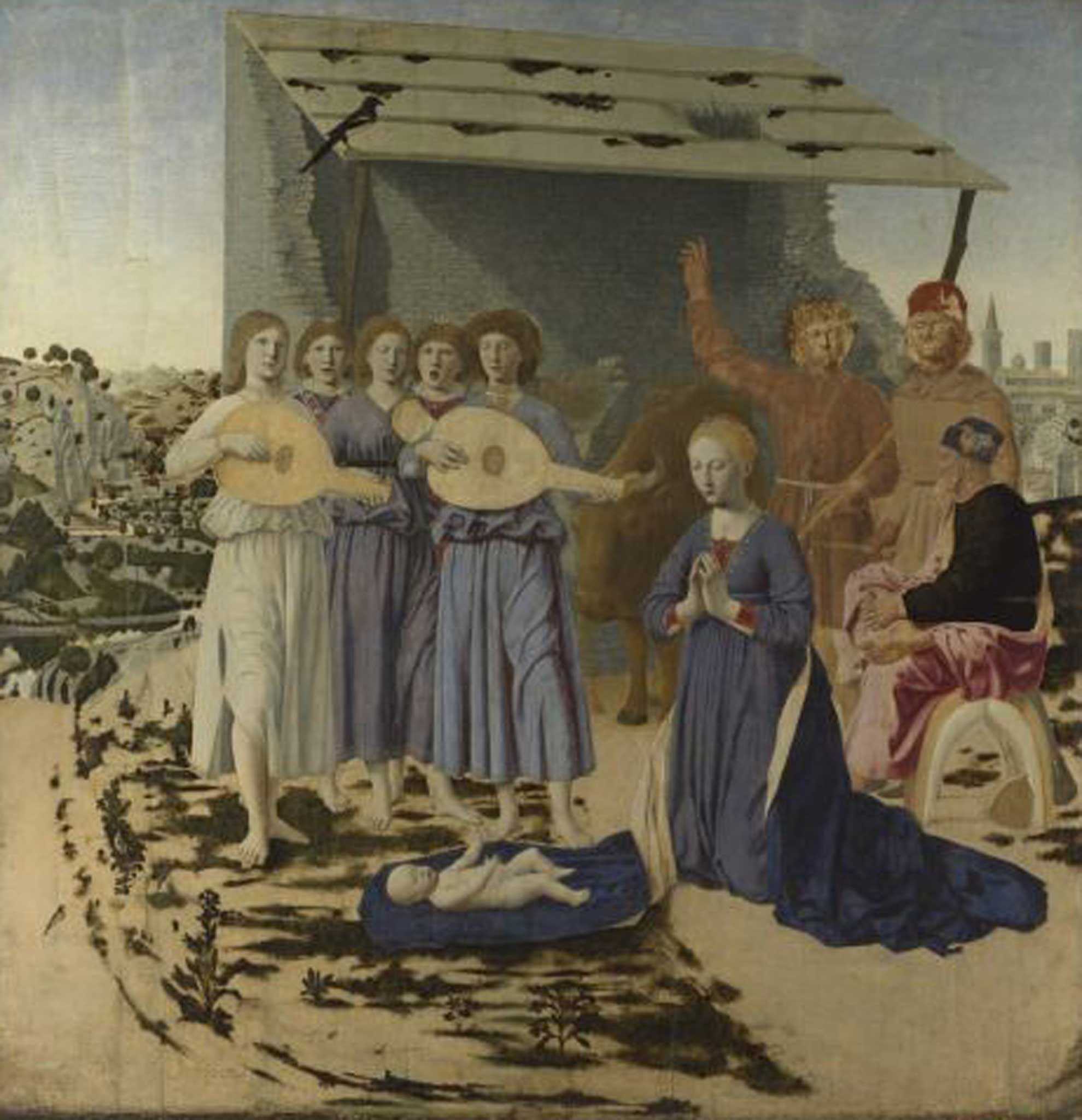Great Works: The Nativity, 1470-75, by Piero della Francesca
National Gallery, London

The issue of when and where Christ's place of birth is to be set has always been an interesting and vexing one, bound up with matters of national pride and perhaps even of imperial ambition. The godhead is always obliged to spread itself so thinly. At this moment in 2011, we showed on this page a Nativity scene by Peter Breughel the Elder, an image of the three kings offering gifts to the infant.
That product of a Northern European sensibility, almost gleefully savage in its degree of irreverence, could scarcely be more different from what you are gazing at now. Remember "In the Bleak Midwinter", Christina Rossetti's carol of the early 1870s commissioned by Scribner's Monthly? There, the earth beneath the child's infant bones was said to be hard as iron.
Here, on the other hand, in this monumentally serene and tranquil work by a man who was both painter and mathematical theorist – the mathematics gained in importance as his eyesight faded – the child has been born on a warm summer's day in Tuscany, just outside Piero della Francesca's birthplace of Borgo Sansepolcro, on a stretch of rising ground, which affords a view of a dainty, touristy Tuscan landscape on the left (complete with with a soodling river), a near perfect disposition of lollipop-shaped trees, and an equally typical Tuscan cityscape on the right.
The scene itself, thrust forward on a promontory of ground, so that it stands high above what we see in the distance to left and right, is like a stage set, with that backdrop of the byre, whose roof is set, unusually for this painter, at an awkwardly slumped angle to the horizontal. In the middle of this foregrounded space, five angels, two bearing lutes, seem to waft forwards as if their enthusiastic devotion might eventually cause them to step on that which they reverence.
Two of them are open-mouthed in joyful song. The tune is taken up by the braying ass in the dilapidated byre behind them, which seems to suggest that the whole of creation is caught up in this collective act of worship. Not quite all. What does not sing is that huge magpie on the roof, a bird well known for its chatter-box habits. The sight of Emmanuel down there on the ground has struck it dumb. The atmosphere is still, dream-like, rapt. The angels seem almost to waft towards us en masse, their feet barely touching the ground.
The virgin, conventionally beautiful for her time, with a skin tone of glazed porcelain, slender fingers carefully, prayerfully steepled, and hair dressed, a gingery cloud, looks down with reverence at the imploring, naked babe. Joseph, on the other hand, with his right leg casually crossed over his left, affording us a good view of the underside of his foot – and here is something that this picture has in common with the Breughel cited earlier – seems to have his mind on other things. The contrast of pink and black is a marvel.
Sadly, the painting is not in very good condition. Or is it that it was never finished? Perhaps both one and the other. Look at the faces of those two shepherds, one holding a staff as he points heavenward – at a star that we cannot see? The paint seems to have been rubbed, almost scoured, away by some drunken, heavy-handed conservator. There are also suggestions, here and there, that Piero might have done more had he not broken off to... do what exactly? We shall never know. Joseph's lovely pink wrap is painted very thinly. You can see through a leg of one of the beasts right to the wall behind.
And the whole work is captured in a reverentially jewelled box of a frame, complete with delicately fluted gilded pilasters that terminate in a flourish of Corinthian capitals. As W H Auden once said of another of Breughel's subjects: perfection of a kind was what he was after.
About the artist: Piero della Francesca (c. 1415-1492)
The somewhat retiring Italian painter Piero della Francesca was little celebrated during his lifetime, being overshadowed by the reputations of noisier and more fashionable contemporaries. Posterity has judged otherwise. His exquisitely serene works, often monumental in scale, possess an extraordinary clarity and mastery of form – thanks, in part, to his parallel life as an important mathematical theorist. London's National Gallery devotes an entire, exquisite room to him.
Subscribe to Independent Premium to bookmark this article
Want to bookmark your favourite articles and stories to read or reference later? Start your Independent Premium subscription today.

Join our commenting forum
Join thought-provoking conversations, follow other Independent readers and see their replies